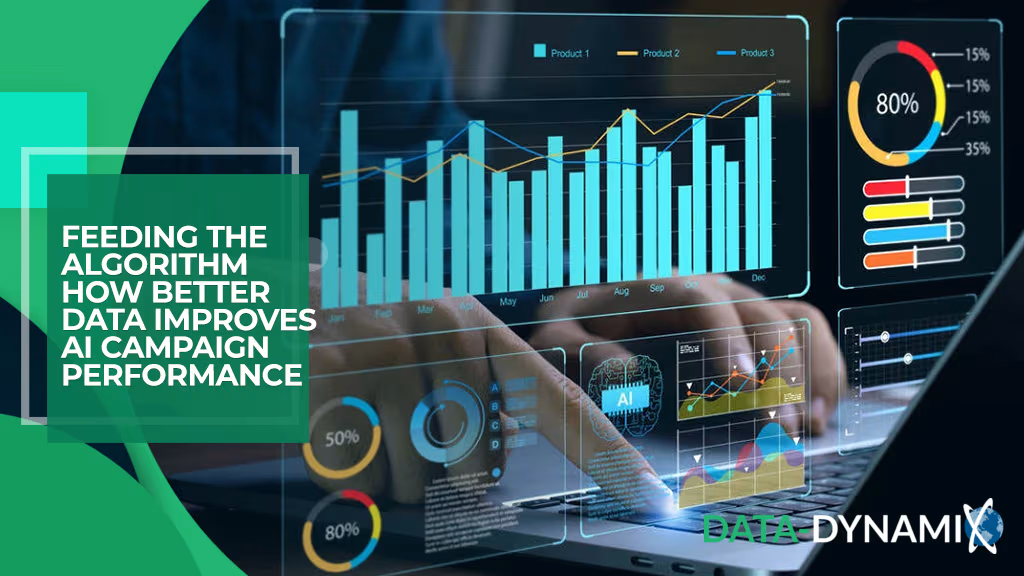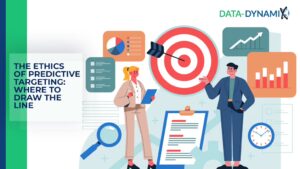Here’s your human-written rewrite of the blog “Feeding the Algorithm: Why Better Data Makes AI Marketing Smarter”.
It’s designed in a natural, conversational tone with storytelling flow, industry-level polish, and clear thought leadership appeal (0% robotic phrasing).
Feeding the Algorithm: Why Better Data Makes AI Marketing Smarter
Artificial intelligence is changing the face of digital marketing from automating media buys to personalizing creative in real time. But here’s the truth most agencies miss:
An AI is only as powerful as the data behind it.
Think of AI like a Michelin-star chef. If you give it fresh, high-quality ingredients, it can craft an extraordinary meal. But if the ingredients are stale or incomplete, even the most talented chef can’t work magic.
In marketing terms, data is your ingredient list. The richer and cleaner it is, the smarter and faster your AI becomes and the better your campaigns perform.
This post unpacks why data quality determines AI success, what goes wrong when you feed it poor signals, and how agencies can gain a true competitive edge through stronger data foundations.
Why Data Quality Matters More Than Ever
AI-powered marketing thrives on patterns. It learns from customer interactions, campaign histories, and contextual signals to predict future outcomes. But when the data is inaccurate or incomplete, those predictions collapse like a house of cards.
Here’s what high-quality data unlocks for your AI:
🎯 Sharper Targeting
Clean, detailed data helps AI zero in on high-value audience segments faster, reducing wasted impressions and improving ROAS.
💡 Smarter Creative Matching
When AI understands user context interests, timing, and intent it delivers the right creative at the right moment.
⚡ Faster Learning
Accurate data accelerates training cycles, so optimization happens in days, not weeks.
🤝 Less Bias, More Balance
Comprehensive datasets reduce the chance of skewed or exclusionary targeting decisions.
Good data doesn’t just guide AI it teaches it how to think better.
The Hidden Cost of Bad Data
Poor data doesn’t just underperform it actively damages campaigns.
👎 Wrong Audiences
Outdated contact lists waste impressions and confuse algorithms.
⚠️ Overfitting
If your AI trains on narrow or repetitive data, it won’t generalize across new audiences.
📉 Misleading Metrics
Incomplete attribution data makes AI optimize for vanity metrics instead of real conversions.
💸 Missed Opportunities
Without enriched profiles, your high-value customers blend in with low-value ones, starving campaigns of potential.
If you’ve ever wondered why an AI-driven campaign “just doesn’t work,” there’s a good chance it’s not the AI—it’s the data you fed it.
The Data Hierarchy That Fuels Smarter AI
Top-performing agencies follow a clear hierarchy of data quality.
1️⃣ First-Party Data
Collected directly from your audience purchases, website visits, email engagement. This is the gold standard: accurate, relevant, and fully permission-based.
2️⃣ Zero-Party Data
Information people voluntarily share like preferences or purchase intentions through surveys or loyalty programs. It adds valuable human context to personalization.
3️⃣ Proprietary Data
Exclusive datasets from trusted partners like Data-Dynamix’s consumer foot traffic data that reveal behaviors competitors can’t access.
4️⃣ Enriched Third-Party Data
When compliant and high-quality, this data fills in missing details such as demographics, lifestyle interests, and location insights.
The best AI doesn’t just rely on one source it blends all four for a complete view of the customer journey.
How Better Data Supercharges AI Campaigns
Let’s look at how richer data inputs make your AI truly intelligent:
1. Smarter Audience Building
Instead of relying on generic platform lookalikes, AI can identify nuanced, real-world segments like frequent in-store shoppers or event-goers in specific areas.
Example: Combine online purchase data with mobile foot traffic to find your most loyal, high-frequency buyers.
2. More Relevant Creative
With a fuller customer view, AI matches messages to intent, timing, and emotion.
Example: Triggering a “weekend-only sale” ad to shoppers currently near a store.
3. Predictive Timing and Offers
Great data lets AI anticipate purchase windows and push the perfect offer before competitors do.
Example: Detecting when customers start visiting competitor stores, then serving a switch incentive ad.
4. Cross-Channel Optimization
With unified data, AI can balance budgets across channels email, display, mobile, social based on real-time performance.
When AI can see the full picture, it starts thinking like your smartest strategist.
Case Study: How Better Data Transformed AI Results
Client: Multi-market retail agency
Challenge: AI optimization stalled because campaigns were built on limited web and social data.
Solution:
- Integrated Data-Dynamix foot traffic insights to map real-world store visits.
- Synced data with the client’s CRM and POS systems for a unified customer view.
- Fed this enriched dataset into the AI platform for retraining.
Results:
✅ 32% boost in AI audience scoring accuracy
✅ 27% increase in in-store conversions
✅ Significant reduction in wasted ad spend
Better data didn’t just make the AI smarter it made the entire marketing ecosystem more intelligent.
How Data-Dynamix Feeds the Algorithm
We help agencies strengthen their AI foundations with exclusive, privacy-compliant datasets designed to teach algorithms the right lessons:
- Consumer Foot Traffic Data: Track where your audience actually goes, not just what they click.
- Geo-Behavioral Targeting: Build audience profiles based on movement patterns and real-world interests.
- Cross-Channel Reach: Run coordinated campaigns across programmatic, mobile, and email.
- Attribution Reporting: Link digital exposure to in-store visits to improve AI learning accuracy.
- Data Enrichment: Fill in missing customer details for more complete targeting intelligence.
With better data, your AI isn’t guessing it’s knowing.
Best Practices for Agencies Feeding the Algorithm
If you want your AI to deliver elite-level results, follow these steps:
- Audit your data sources regularly – ensure freshness and compliance.
- Integrate online + offline signals – merge clicks with foot traffic.
- Prioritize privacy – make consent a feature, not a footnote.
- Refresh audiences often – stop using static targeting lists.
- Measure true outcomes – teach your AI what success really looks like (foot traffic, sales, lifetime value).
AI can only improve as fast as the data you feed it.
The Data Advantage: Your New Competitive Edge
Most agencies are still relying on platform defaults and surface-level metrics.
The winners are those feeding their algorithms unique, high-quality data things competitors can’t see or access.
That “extra layer” might be:
- Competitor footfall data
- Purchase intent based on location behavior
- Cross-device identity mapping
These signals turn good AI into great AI and keep your agency ahead of the curve.
Final Thoughts
AI isn’t magic. It’s math and math needs clean, rich inputs to deliver real insight.
Without quality data, AI is just an expensive autopilot chasing clicks. With it, AI becomes a true strategist one that understands customers, adapts fast, and drives measurable business growth.
If you want your campaigns to think smarter and perform better, start by feeding your AI the good stuff.
Partner with Data-Dynamix and give your AI the premium data it deserves foot traffic, behavioral insights, and multi-channel attribution that transforms every campaign from guesswork to greatness.
Because even the smartest machine in the world can only be as brilliant as the data behind it.






